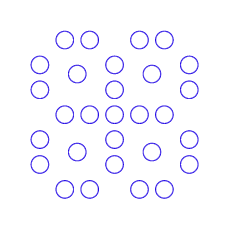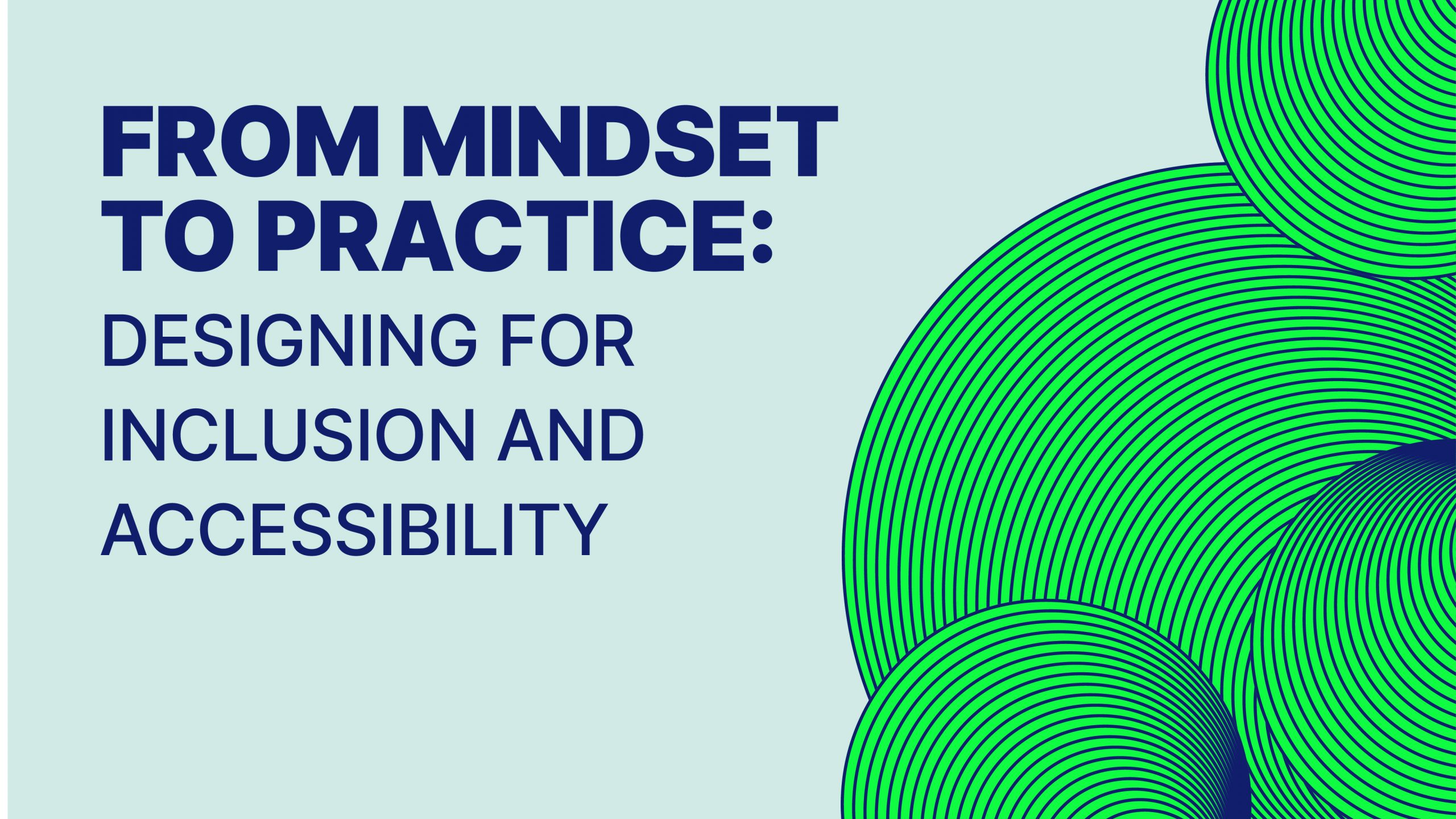Everything we build should be as inclusive, legible and readable as possible. If we have to sacrifice elegance – so be it… The people who most need our services are often the people who find them hardest to use. Let’s think about those people from the start.
— UK Government Digital Service, principle number 6
Inclusive design
Inclusive design is the creation of products and experiences that serve as many people as possible. It acknowledges variations in age, gender, lifestyle, culture, values, location, past experiences, customs, current circumstances, and available resources.
For our team at Big Blue, inclusive design is a mindset that guides speaking, listening, and how we create digital content such as animation, film, publications, websites, and mobile phone applications.
In an animation production, for instance, an inclusive design mindset will influence factors such as word choice in a script, the type of characters that are illustrated, and even the choice of narrator and color palette.
Who is excluded from your digital project?
Start with an important question. Who may be excluded from the design of your digital product? This may be a difficult question! Answers may be uncomfortable or may force your team to confront long-held biases.
Perhaps all of your products have always excluded the same groups. But conversely, you may realize that you can enlarge an audience with efficient design changes.
Below are key characteristics of the inclusive design mindset.
- Seeks exclusion and marginalization
- Influences messaging, tone of voice, and choices of imagery, words, sounds, characters, and cultural references
- Attempts to meet varying needs of groups such as vulnerable people and children where relevant
Who adopts an inclusive design mindset on digital projects?
Everyone should adopt an inclusive design mindset. That includes project managers, strategists, designers, developers, writers, and animators.
Examples of inclusive mindset at work
- Workspace designs that accommodate different ways of working, different work habits, routines, and physical and other requirements
- More inclusive office and retail spaces that acknowledge the varying needs of customers, clients, visitors, and employees
- Recruitment processes that seek and correct biases
- Flexible working arrangements for caregivers, parents, disabled or pregnant workers
- Customer service experiences that acknowledge diversity
- Use of communication tools such as meeting agendas, calendar notifications, and varied meeting recording options so individuals can prepare and participate in their own ways of working
- Feedback, response, and complaint systems that respond to emerging users’ needs after a product launch
- Data collection forms that recognize diverse identities, cultures, and experiences
“Designing for inclusion begins with recognizing exclusion.
— Kat Homes, Senior Vice President of Product Experience at Salesforce, author, Mismatch: How Inclusion Shapes Design
Accessible design – a part of inclusive design
According to the World Health Organisation, more than 1 billion people live with a disability. That is 15 percent of humanity. In the UK, 1 in 5 people have a disability that may be motor, cognitive, visual, or hearing-related.
Accessible design is a subset of inclusive design. It is the creation of user experiences with a focus on overcoming disability. Accessible design is also increasingly a requirement for public sector digital projects.
The accessible design mindset
Accessible design aims to serve everyone, regardless of ability. It is often a starting point for broader inclusive design. It acknowledges the needs of users who may experience challenges related to attention, comprehension, physical disability, emotional hardship, housing insecurity, injury, medical condition, lack of language fluency, language barriers, learning disabilities, low literacy, nutrition insecurity, time restrictions, and unfamiliarity with technology.
- Influences design of headings and sub-headings, icons, image carousels, online forms, on-screen touch buttons, sliders, toggles, typography hierarchy
- Supported by tools such as captions, image descriptions, screen readers, transcripts, video conferencing
- Applies to captions, color contrast, color use, font sizes, icon use, language use, legibility, typography, use of imagery
- Has no perfect final outcome, but is a process of development and adaptation
Disability is not black and white. Disability is fluid. Disability is a three-dimensional spectrum. It can come and go, and it can be temporary. No one is fully able their entire life.
Examples of accessible design on digital projects
- Clear plain text in large font that is divided into manageable paragraphs
- Websites that can be easily navigated with keyboard controls
- Full transcripts or excerpts for video, animation, and podcasts
- Mobile phones that include screen readers and accessibility features as standard
- Video games that offer speech-to-text and configurable visuals
- Hyperlinks are differentiated by both font color and font weight to assist readers with color deficiencies
- Touch screens were initially designed for disabled users but then were sold to Apple
“The accessibility problems of today are the mainstream breakthroughs of tomorrow.
— Eve Andersson, Director, Accessibility Engineering, Google
Key takeaways
Everyone on a production team has a role in inclusive and accessible design. That includes team leaders, project managers, designers, content writers, animators, and filmmakers.
Below are key takeaways for your team to consider on your digital projects.
- Consider inclusion and accessibility at all production stages
- Disability can be temporary and can affect anybody at any time
- Disability is a spectrum
- Most disabilities are acquired later in life
- Always consider hidden disabilities
- Include users with disabilities in user research
- No one is fully capable throughout their entire life
Questions for digital projects
- What type of movement, sight, listening, physical engagement, and thinking is needed to engage with this product?
- What are the obstacles to users’ experiences of this product?
- Is anyone completely or partially excluded?
- Where are we prioritizing aesthetics over access?
- What biases can we detect in ourselves?
“The power of the Web is in its universality. Access by everyone regardless of disability is an essential aspect.
— Tim Berners-Lee, inventor, World Wide Web
Read more
- Global Accessibility Awareness Day (third Thursday of each May)
- Gov.uk, Making your service accessible: an introduction
- Inclusive Design: Beyond Accessibility, Design Council UK
- Microsoft Inclusive Design
- Web Content Accessibility Guidelines (WCAG) Overview

